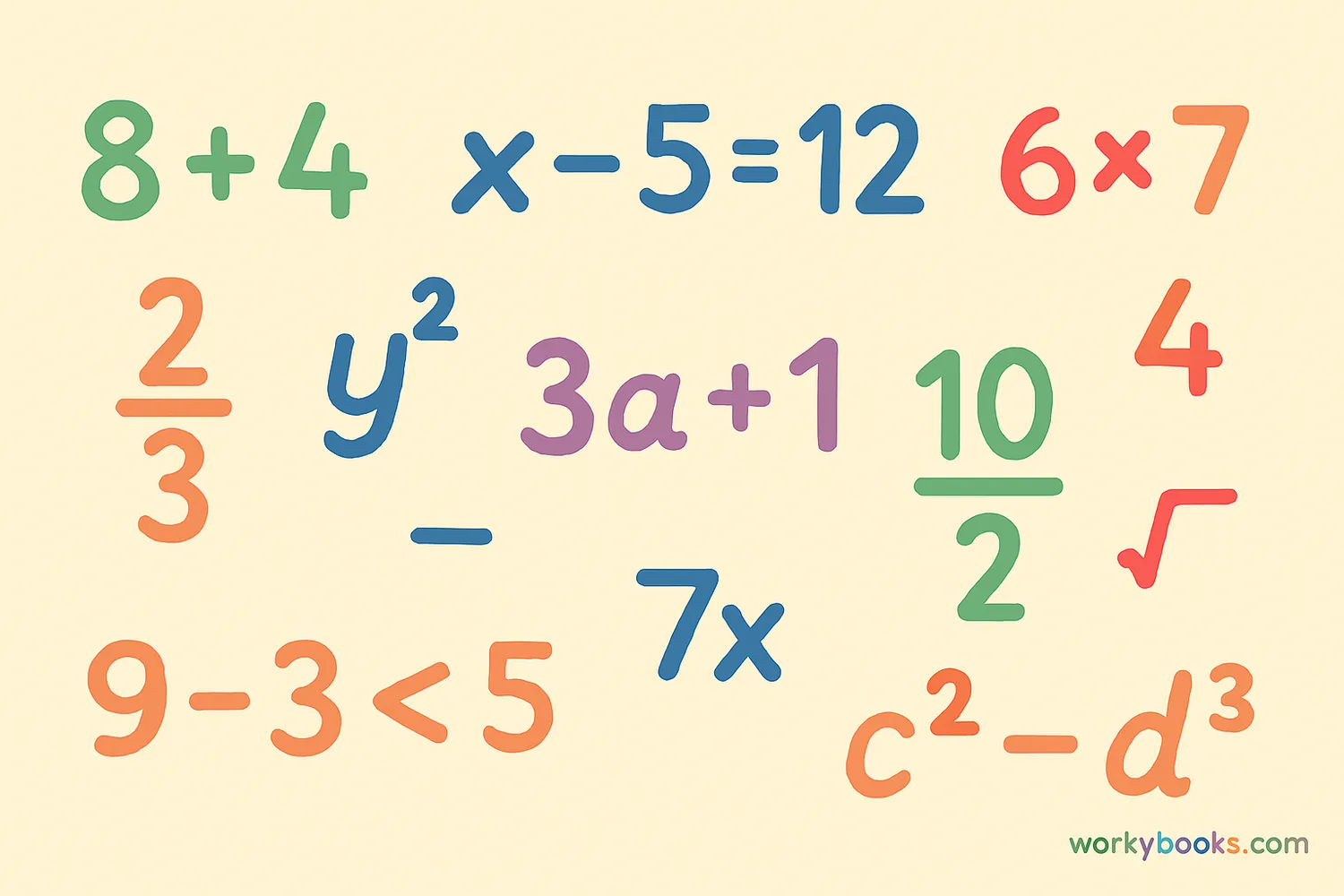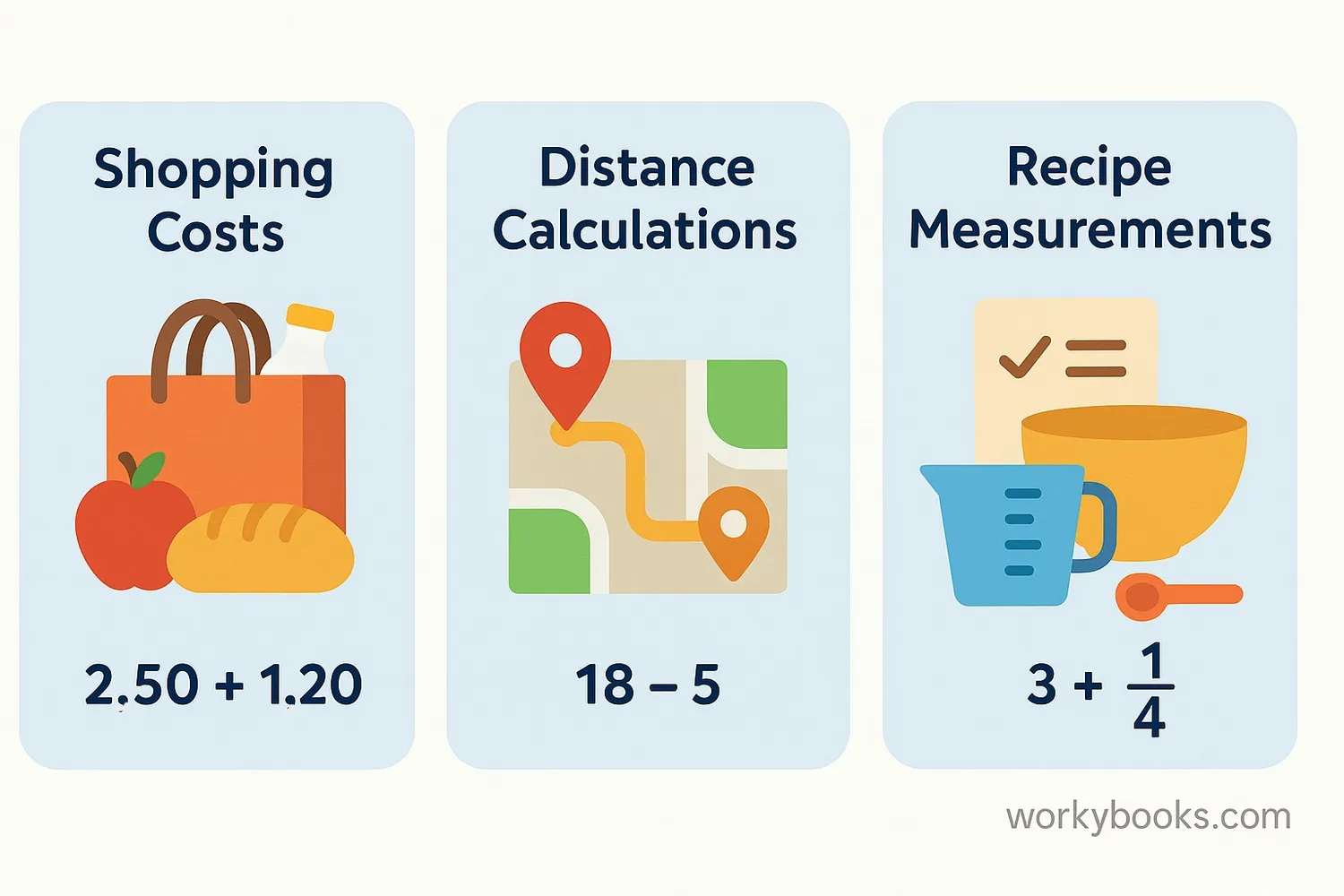Expression - Definition, Examples, Quiz, FAQ, Trivia
Learn about mathematical expressions with easy explanations, examples, and interactive activities
What is a Mathematical Expression?

A mathematical expression is a combination of numbers, variables, and operations that represents a value. Unlike equations, expressions don't have an equal sign.
Think of expressions as mathematical phrases rather than complete sentences. For example, "2 + 3" is an expression, while "2 + 3 = 5" is an equation.
Expressions are the building blocks of algebra. They help us describe patterns, relationships, and solve problems. You've been using expressions since you first learned to add numbers together!
Key Concept
An expression is a mathematical phrase that contains numbers, variables, or operations, but no equal sign.
Parts of an Expression
Expressions have different parts that work together. Let's look at the expression:
Terms: Parts of an expression separated by + or - signs. In "3x + 5", there are two terms: "3x" and "5".
Variables: Symbols (usually letters) that represent unknown values. In "3x", "x" is the variable.
Coefficients: Numbers multiplied by variables. In "3x", 3 is the coefficient.
Constants: Numbers that stand alone without variables. In "3x + 5", 5 is the constant.
Operations: Mathematical actions like addition (+), subtraction (-), multiplication (×), and division (÷).
Remember
Expressions are made of terms, and terms can include coefficients, variables, and constants.
Types of Expressions
There are several types of expressions in mathematics:
Numerical Expressions: Contain only numbers and operations. Example: 5 + 3 × 2
Algebraic Expressions: Contain variables, numbers, and operations. Example: 2x + 3y - 5
Polynomial Expressions: Special algebraic expressions with variables raised to whole number exponents. Example: 3x² + 2x - 1
Rational Expressions: Expressions that contain fractions with polynomials. Example: (x + 1)/(x - 2)
As you learn more math, you'll encounter even more types of expressions!
Learning Tip
Start with numerical expressions, then move to algebraic expressions as you become more comfortable with variables.
Expression Examples

Let's look at some examples of expressions in action:
Example 1: Shopping for apples
If apples cost $2 each, the expression for the cost of x apples is: 2x
Example 2: Calculating area
The area of a rectangle is length × width. If length is L and width is W, the expression is: L × W
Example 3: Baking cookies
A recipe needs 3 cups of flour per batch. For b batches, the expression is: 3b
Example 4: Age problems
If Maria is 5 years older than Juan, and Juan is J years old, Maria's age is: J + 5
Can you think of other situations where expressions might be useful?
Practice Tip
Try creating expressions for situations in your daily life to practice this important math skill.
Expression Practice Quiz
Test your understanding of expressions with this 5-question quiz. Choose the correct answer for each question.
Frequently Asked Questions
Here are answers to common questions about mathematical expressions:
Math Trivia
Discover interesting facts about mathematical expressions:
Ancient Algebra
The use of variables in mathematical expressions began over 3,000 years ago with Babylonian mathematicians. However, they used words instead of letters to represent unknown quantities.
Why X?
The use of "x" as a variable in expressions became popular thanks to René Descartes in the 17th century. In his native French, "chose" meant "thing," which translated to "x" in Spanish, which Descartes used.
Longest Expression
The longest mathematical expression ever written filled over 15,000 pages! It was a proof about the classification of finite simple groups completed by hundreds of mathematicians.
Expressions in Computers
Computer programming languages use mathematical expressions extensively. In fact, most programming is about creating and manipulating expressions to solve problems.


